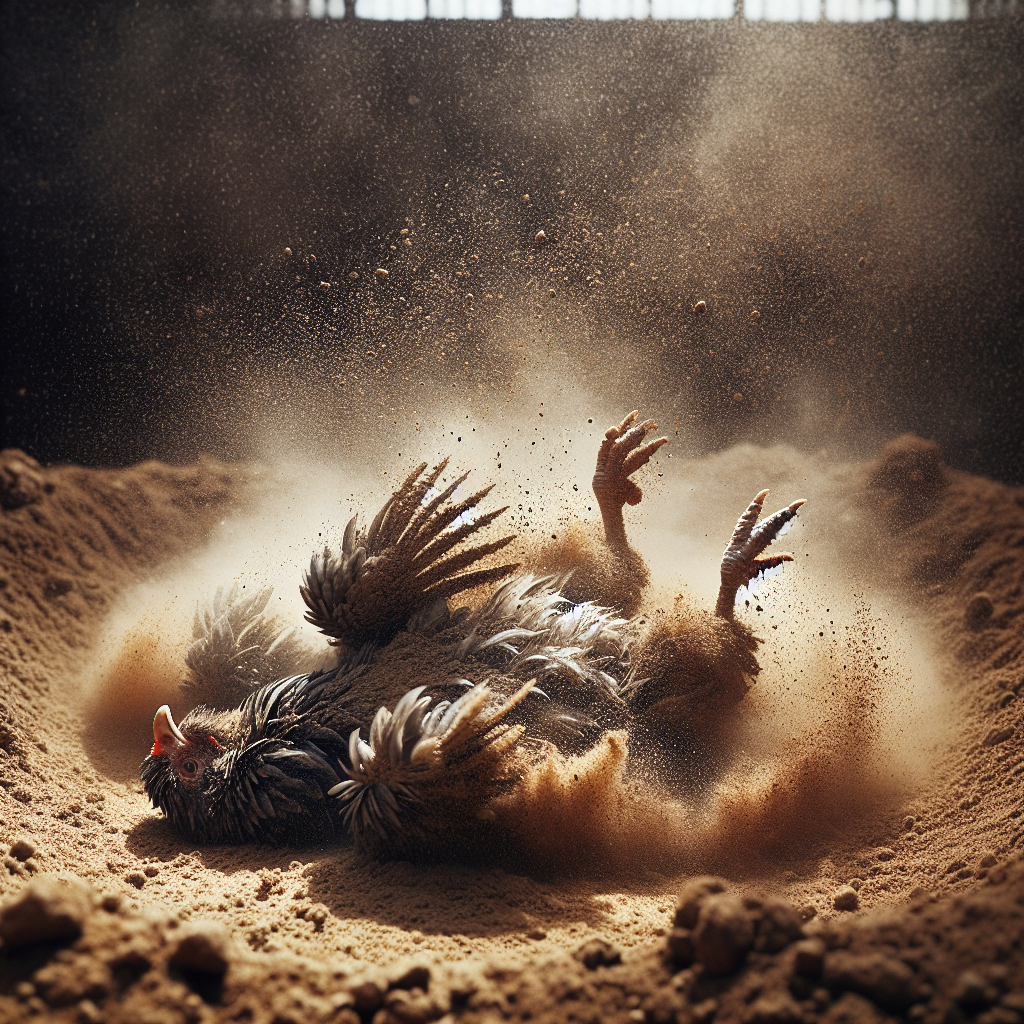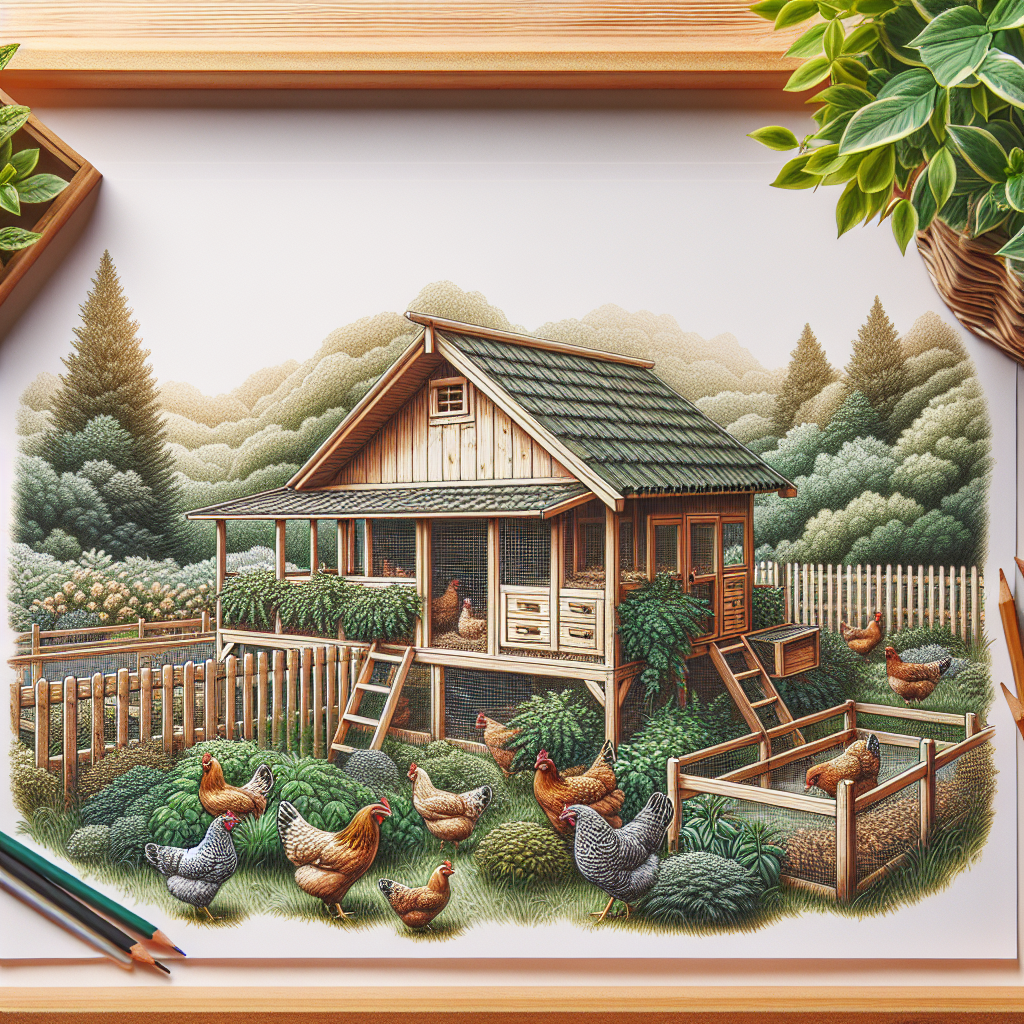In order to ensure the well-being and health of chickens, access to dust baths plays a crucial role in terms of preventive care. Dust baths, consisting of a shallow area filled with fine dust or dirt, are an essential behavioral and hygienic activity for chickens. By allowing chickens to have access to dust baths, it helps them maintain their plumage condition, control parasites, and alleviate stress. This article will explore the significance of dust baths for chickens’ overall health and why providing them with this opportunity is vital for preventive care.
Understanding Dust Baths
What is a dust bath?
A dust bath is a behavior that chickens engage in to maintain their feather and skin health. It involves the chicken finding a suitable area and then digging a small hole or depression in the ground. The chicken then proceeds to roll and flail around in the loose, dry soil, covering its feathers completely. This action helps to remove dirt, excess oil, and parasites from the chicken’s feathers and skin.
Why do chickens need dust baths?
Chickens need dust baths for a few reasons. Firstly, dust baths help to clean the feathers and skin, ensuring that they remain in good condition. Secondly, dust baths serve as a natural way for chickens to control external parasites, such as mites and lice. Lastly, dust baths promote overall feather health and condition, which is important for a chicken’s well-being and ability to regulate body temperature.
Benefits of Dust Baths for Chickens
Cleaning Feathers and Skin
One of the main benefits of dust baths for chickens is that it helps to clean their feathers and skin. When chickens roll around in the dry soil, the dust particles penetrate the feathers and absorb excess oil and dirt. This action acts as a natural form of bathing, allowing chickens to stay clean and remove any debris that may accumulate on their bodies. By engaging in dust baths, chickens can maintain their plumage in pristine condition.
Controlling External Parasites
Another important benefit of dust baths for chickens is their ability to control external parasites, such as mites and lice. The dust particles adhere to the parasites, causing them to suffocate and die. Additionally, the abrasive action of the dust on the chicken’s skin helps to dislodge any parasites that may be present. By regularly engaging in dust baths, chickens can effectively keep these unwanted pests at bay and reduce the risk of infestations.
Maintaining Feather Health and Condition
Feathers play a crucial role in a chicken’s overall health and well-being, providing insulation, protection, and even communication. Dust baths help to maintain feather health and condition by preventing the buildup of excess oil and debris, which can weigh down the feathers and compromise their integrity. By keeping their feathers clean and free from contaminants, chickens are better equipped to regulate their body temperature and maintain optimal health.
Preventive Care and Dust Baths
Preventing Feather Mites and Lice
One of the key aspects of preventive care for chickens is preventing feather mites and lice infestations. These parasites can cause discomfort, irritation, and even disease in chickens. Dust baths serve as a natural and effective preventive measure by removing these parasites from the chicken’s body. Regular access to dust baths can significantly reduce the risk of infestations and minimize the need for chemical treatments.
Reducing the Risk of Fungal and Bacterial Infections
Damp and dirty feathers provide the perfect breeding ground for fungal and bacterial infections in chickens. By regularly engaging in dust baths, chickens can keep their feathers clean and dry, reducing the risk of these types of infections. The action of rolling in the dry soil helps to remove moisture and prevent the growth of harmful microorganisms. Dust baths are a simple yet effective way to promote good hygiene and minimize the risk of infections.
Promoting Natural Pest Control
Chickens are natural foragers and have an innate ability to control pest populations. Dust baths further enhance this natural pest control ability. By regularly engaging in dust baths, chickens can effectively remove parasites from their bodies, preventing infestations and reducing the need for chemical treatments. The natural oils and compounds found in the dust also act as repellents, deterring pests from approaching the chickens’ bodies.
Improving Overall Health and Well-being
Access to dust baths is vital for the overall health and well-being of chickens. Engaging in dust baths allows chickens to engage in natural behaviors and helps to fulfill their physical and emotional needs. The act of rolling in the dust releases endorphins in chickens, promoting a sense of satisfaction and contentment. Additionally, dust baths contribute to a clean and healthy environment for the chickens, reducing the risk of diseases and promoting their overall vitality.
Creating an Ideal Dust Bath Area
Choosing the Right Location
When creating a dust bath area for your chickens, it is essential to choose the right location. Ideally, the area should be well-drained and away from high-traffic areas to minimize contamination and disturbance. It should also be partially shaded to protect the chickens from the sun while they engage in their dust baths. Choosing the right location ensures that the chickens feel comfortable and safe while they indulge in this natural behavior.
Providing Suitable Materials
The materials provided in the dust bath area are crucial for ensuring its effectiveness. The ideal material for chickens’ dust baths is loose, dry soil or sand. This type of soil allows for easy digging and provides enough friction to dislodge debris from the chicken’s feathers. Adding diatomaceous earth to the dust bath area can enhance its effectiveness by further controlling parasites. Avoid using dusty or clayey soils, as they may cause respiratory issues and make it difficult for chickens to clean themselves.
Ensuring Adequate Space
Chickens need adequate space to perform their dust baths comfortably. The dust bath area should be large enough to accommodate multiple chickens at once, allowing them to engage in their natural behavior without overcrowding. Providing enough space ensures that each chicken has enough room to roll, flap their wings, and cover themselves completely with dust. When planning the dust bath area, consider the number of chickens you have and provide ample space for all of them to enjoy their dust baths.
How Often Should Chickens Dust Bathe?
Frequency of Dust Bathing
The frequency of dust bathing can vary among individual chickens and is influenced by factors such as weather conditions and the presence of external parasites. In general, chickens will instinctively seek out dust baths when they feel the need to clean themselves. It is recommended to provide access to a dust bath area at all times, allowing the chickens to engage in this behavior as often as they feel necessary. As a chicken keeper, observe your flock and ensure that they have the opportunity to dust bathe regularly.
Monitoring and Adjusting
While providing access to a dust bath area is important, it is equally crucial to monitor the chickens’ behavior and adjust accordingly. Keep an eye out for signs of excessive dust bathing or the presence of external parasites. Excessive dust bathing can indicate a higher parasite load or an underlying health issue. Conversely, a lack of dust bathing may suggest that the chickens are not feeling well or that the dust bath area needs attention. By closely monitoring and making necessary adjustments, you can ensure that your chickens have the right balance of accessibility and preventive care.
Possible Issues and Solutions
Overcrowding and Lack of Access
Overcrowding in the dust bath area can lead to conflicts among the chickens and create an uncomfortable environment. It is essential to provide enough space and multiple access points for the chickens to ensure that each bird can engage in dust bathing without stress. If you notice overcrowding, consider expanding the dust bath area or providing additional dust bath areas in different locations. Ensuring adequate access to dust baths promotes harmony among the flock and maintains preventive care.
Contamination of Dust Bathing Area
The dust bath area can become contaminated over time due to the accumulation of dirt, droppings, and other debris. Regularly cleaning and refreshing the dust bath area will help maintain its effectiveness and ensure that the chickens can clean themselves properly. Remove any excess waste or soiled soil and replace it with fresh, dry materials. This will provide a clean and inviting environment for the chickens to continue their dust baths.
Managing Excessive Dust
While dust baths are essential for chickens’ health and well-being, excessive dust in the coop or the surrounding area can pose respiratory issues for both the chickens and their keepers. To manage excessive dust, consider placing the dust bath area in a separate, well-ventilated space away from the coop. Regularly clean the surrounding areas to minimize dust accumulation. You can also sprinkle water on the soil before dust bathing to help reduce the amount of dust particles in the air.
Alternative Dust Bathing Methods
In certain situations, providing access to a traditional dust bath area may not be feasible. For example, if you have chickens in an urban setting or have limited outdoor space. In such cases, you can explore alternative dust bathing methods. Providing fine sand or a shallow tray with dry soil in the coop can act as a substitute for a full dust bath area. These alternatives allow chickens to engage in dust baths even in limited spaces, enhancing their preventive care routine.
Conclusion
Access to dust baths is crucial for the preventive care of chickens. Dust baths provide numerous benefits, such as cleaning feathers and skin, controlling external parasites, and maintaining overall feather health. By creating an ideal dust bath area and monitoring the chickens’ dust bathing frequency, you can ensure that they have optimal access to preventive care. Addressing possible issues and considering alternative dust bathing methods allows for a comprehensive approach to providing chickens with the dust baths they need for their well-being. So, make sure to prioritize access to dust baths in your chicken care routine and watch your flock thrive!




